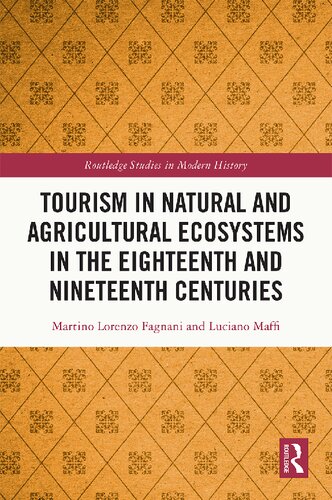

Most ebook files are in PDF format, so you can easily read them using various software such as Foxit Reader or directly on the Google Chrome browser.
Some ebook files are released by publishers in other formats such as .awz, .mobi, .epub, .fb2, etc. You may need to install specific software to read these formats on mobile/PC, such as Calibre.
Please read the tutorial at this link: https://ebookbell.com/faq
We offer FREE conversion to the popular formats you request; however, this may take some time. Therefore, right after payment, please email us, and we will try to provide the service as quickly as possible.
For some exceptional file formats or broken links (if any), please refrain from opening any disputes. Instead, email us first, and we will try to assist within a maximum of 6 hours.
EbookBell Team

0.0
0 reviewsThis book analyzes the roots of one of the main human activities that can be developed in natural and agricultural ecosystems: tourism.
Attention to natural and agricultural ecosystems and their conservation has intensified in recent decades, responding to increasing social sensitivity to the environment, as also witnessed by Agenda 2030. The book explores the development of tourism in natural and agricultural ecosystems in the eighteenth and nineteenth centuries, when some of its essential features derived from the practices of exploration, scientific study, business, healing practices, and also a desire for personal growth. This research is intended to open up international scholarly debate and discussion and draw in contributions from all disciplines and geographical areas. In addition, it intends to add an important piece to the mosaic of international literature that has rarely considered the origins of nature and rural tourism in an array of practices not always embodying a stated intent of recreation. This book is based on handwritten documents and travelogues circulating during the period in question. Most of the travel experiences analyzed regard men and women of European descent, but their travels were global, with ecosystems considered on all populated continents.
This volume is essential reading for students and scholars alike interested in tourism history and the history of science and travel.